site search
online catalog
SCARCE CIVIL WAR ARMY ISSUE SHOE, A.K.A. BROGAN OR BOOTTEE
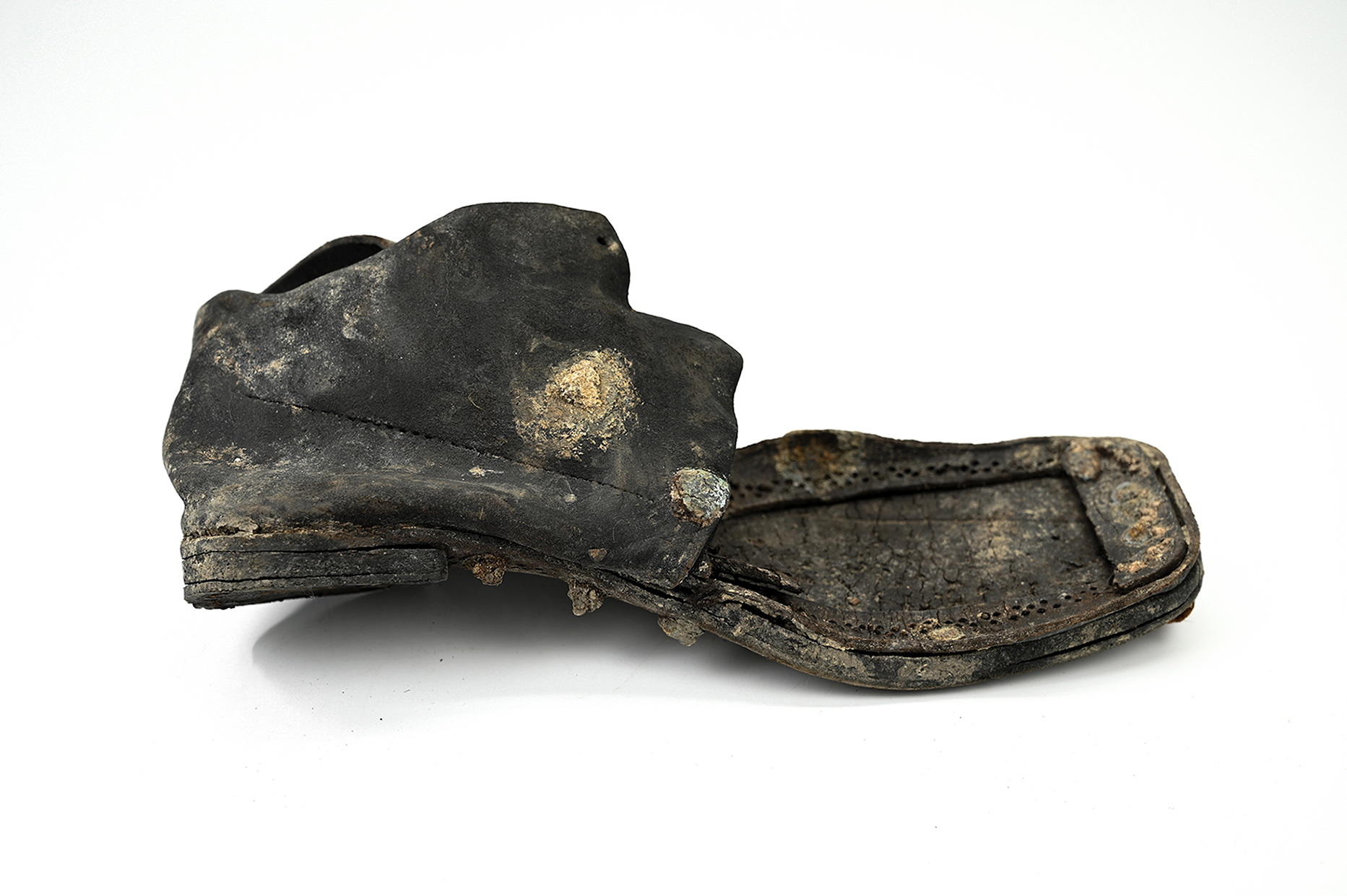
Hover to zoom

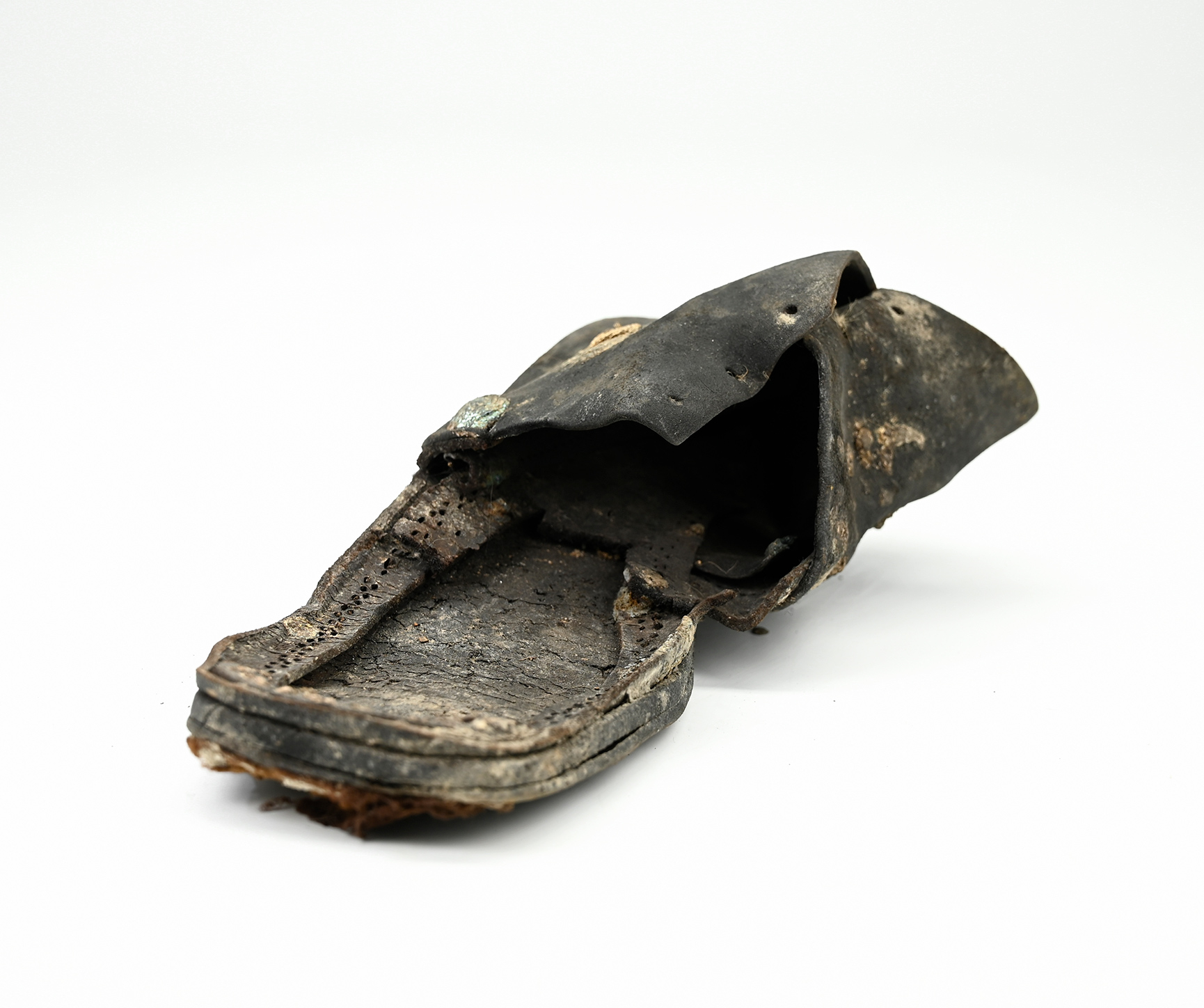
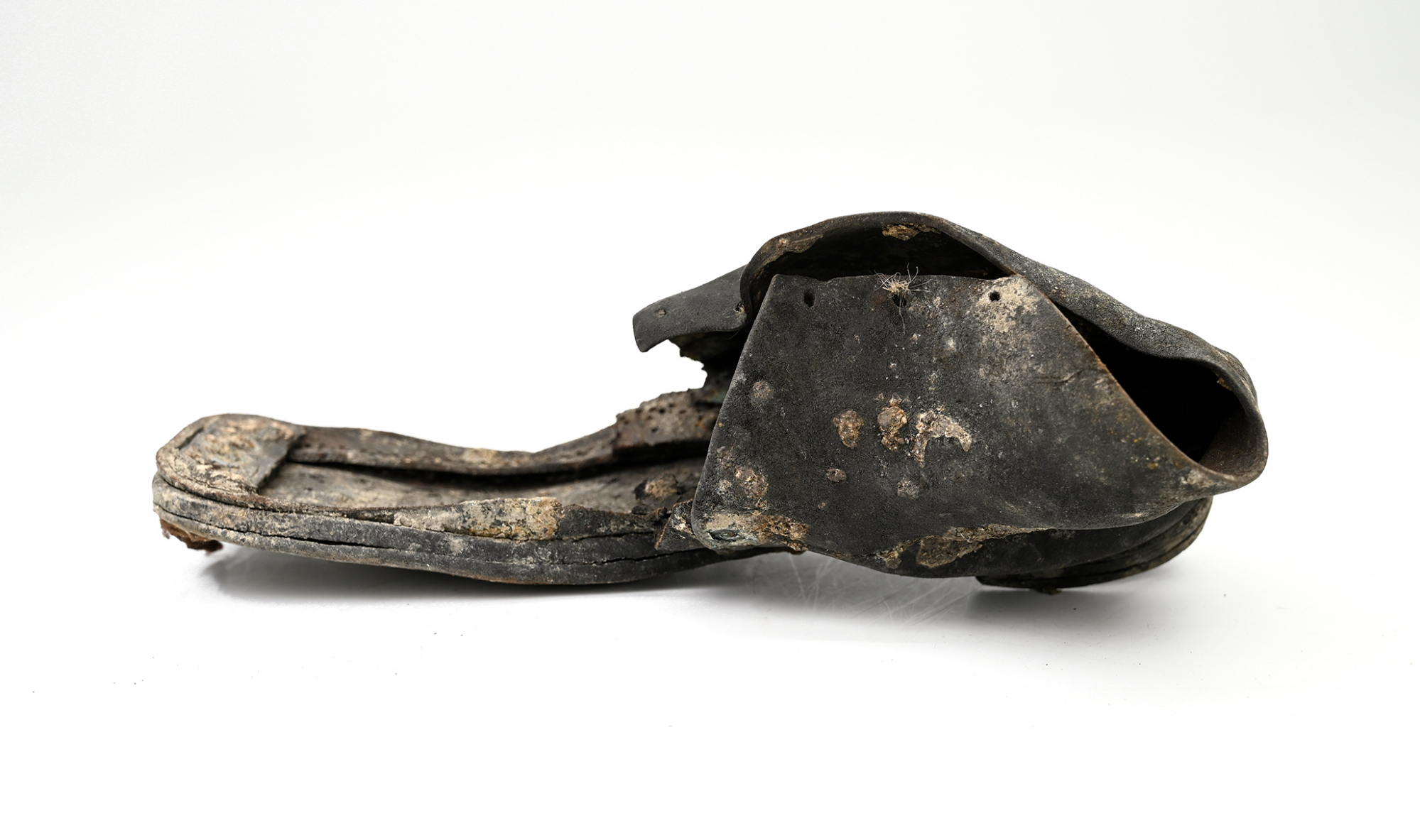
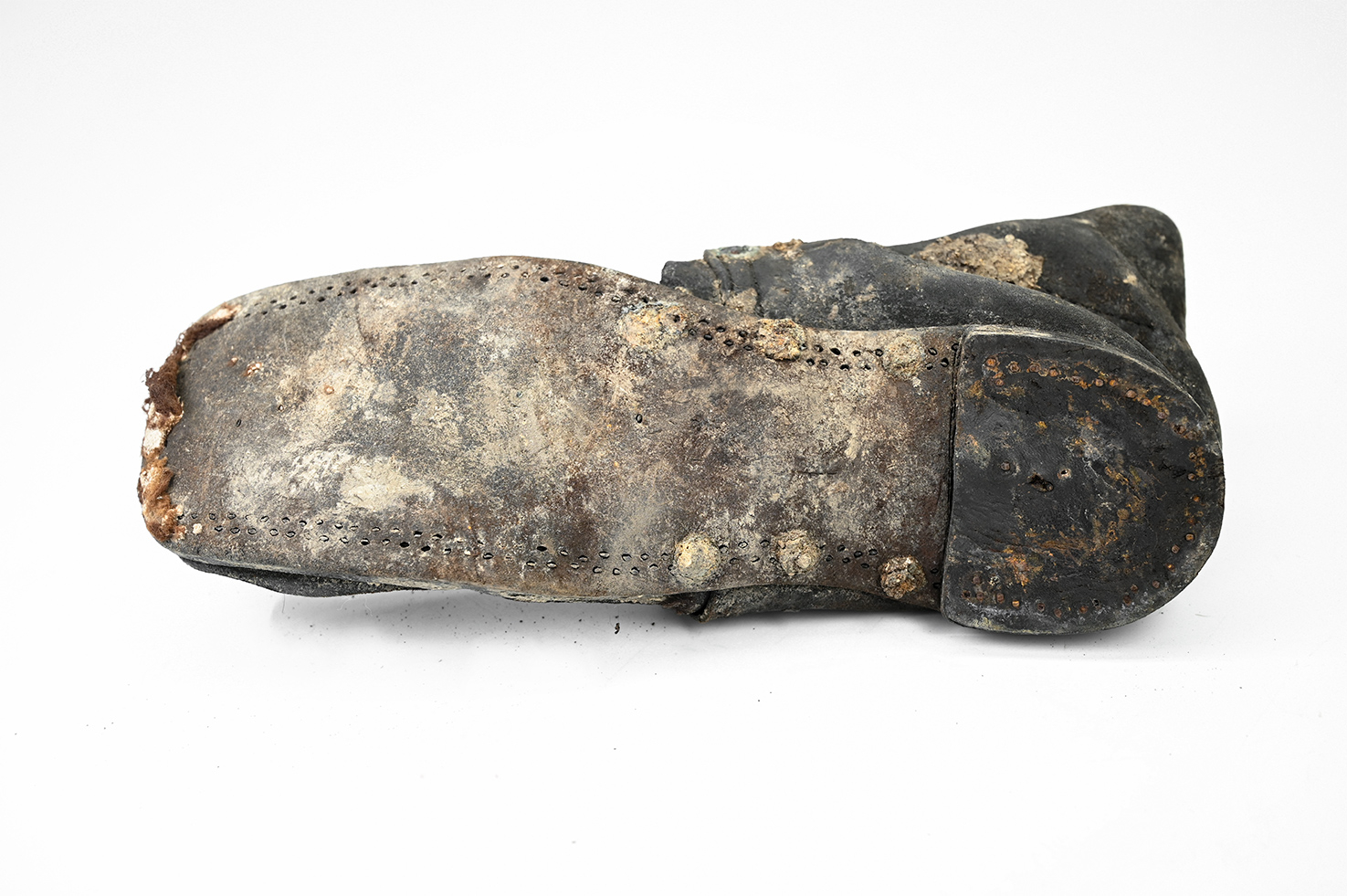
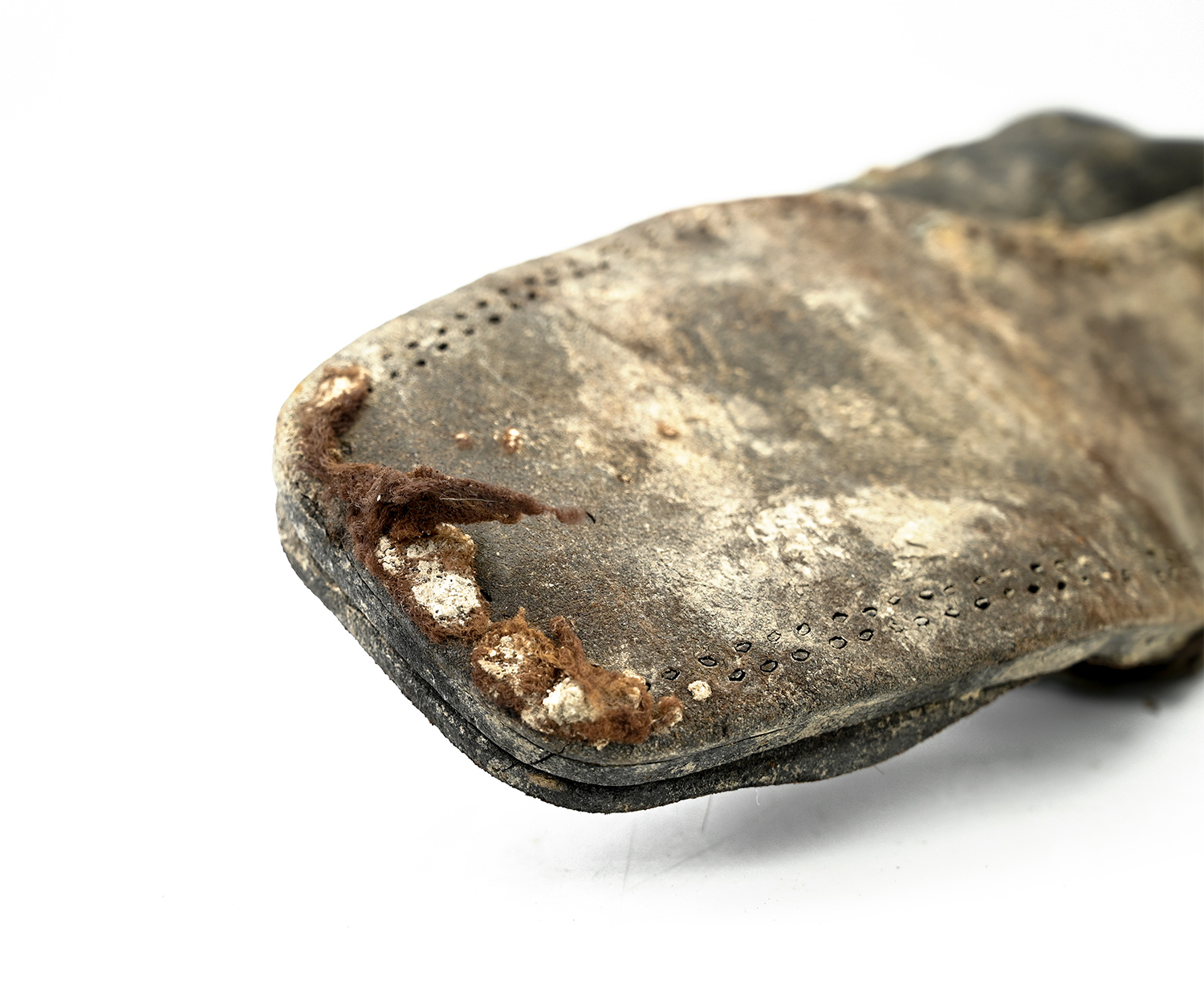
$225.00
Quantity Available: 1
Item Code: 1052-542
Shipping: Determined by Method & Location of buyer
To Order:
Call 717-334-0347,
Fax 717-334-5016, or E-mail
This Civil War issue shoe is missing the vamp, but shows illustrates the typical construction of an issue brogan. This comes from a U.S. Army Indian War post established in 1870, a period in which the army was still using up its vast surplus stocks of Civil War uniforms and equipment. It follows fully the Civil War pattern, which was replaced gradually after the adoption of a modified pattern in 1872 using brass screws to secure the soles, and later patterns in 1876 and 1886, that reintroduced stitching, but were very different in overall look and design. The underside of the sole shows lines of stitching along the sides and toe, with three small reinforcing rivets, now corroded on each side of the instep. Two layers of the heel are still in place. The upper portion shows the use of a single rivet on either side to reinforce the stitching joining the vamp to the quarters, which are intact, show the counter, heel reinforcement, still in place, and three holes for the shoe lace on either side. The leather is stiff, but the shoe is solid and the sole is good. There are scattered gray and light brown stains.
Being so readily worn out and discarded, practical for postwar civilian use, and uninspiring as relics of patriotic service, Civil War U.S. Army issue shoes are among the rarer pieces of Civil War uniforms and equipment despite being made in the millions. They fall into general categories by construction: with soles that are pegged and with those that are sewn, further broken down whether done by hand or machine, with the shoes both made at some depots or purchased from contractors through the depots for distribution. The numbers involved are prodigious. Philadelphia depot, for example, purchased some 3,231,647 pairs of sewn shoes and made others. New York distributed almost three million sewn pairs and well over three-hundred thousand pegged pairs. Cincinnati furnished more than two million pegged pairs and six million sewn. Some considered the soles too thin, but they were generally well regarded for use on southern roads, “where one hardly strikes a pebble in a mile.” It was complaints coming from troops serving in the southwest where rough and rocky ground would cut stitching and tear off heels and cause wood pegs to pop out from dryness that led to the use of brass screws starting in starting with the pattern of 1872 and continued in the pattern of 1876, with the addition of a longer tongue. We recommend “The Army Shoe” by J.E. Tobey in the Columbia Rifles Research Compendium, as well as articles in Company of Military Historians, Brinkerhoff’s Boots and Shoes of the Frontier Soldier, and McChristian’s excellent volumes on the postwar US army.
This example comes from the excavations at Fort Pembina, ND, conducted on private property with the owner’s permission, and is in a remarkable state of preservation from the anaerobic conditions of the soil. The fort was established in 1870 by troops of the 20th US Infantry and as is typical of the early Indian Wars regular army, their uniforms and gear were a mix of Civil War surplus issue and private purchase material, along with later army issue patterns and private purchases as time went on, until the post was shut down and abandoned in 1895.
Situated in the Red River Valley in North Dakota near the Canadian border, was established in 1870 and in operation until 1895. Trading posts existed earlier in the area as part of the fur trade, and the first U.S. military post there was temporary- manned by a detachment of Minnesota troops in 1863-1864 following the 1862 Sioux uprising. In March 1870 a new fort was established south of the Pembina River and about 200 yards west of the Red River, completed by July and named in honor of Gen. George H. Thomas. The name was changed to Fort Pembina in September and the initial garrison consisted of two companies of the 20th US Infantry. Their main duty was to provide security for settlers worried about Sioux returning south from Canada, but the troops were more occupied with escorting boundary surveys along the Canadian border and preventing Fenian raids heading north into Canada.
The fort included enlistedmen’s barracks, officers’ quarters, guard house, ordnance storehouse, company kitchen, root house, laundress’s quarters, quarters for civilian employees, hospital and hospital servant’s house, a barn for the “hospital cow,” quartermaster and commissary offices and storehouse, stables, wagon shed, etc. The garrison reached peak strength in 1878 af 200, but the average was about 125 enlisted men and 8 officers. An October 1885 return listed 97 men, 2 field pieces, 1 mountain howitzer, 100 rifles, 19 pistols, 23 mules, and 9 wagons. By 1890 the post had just 23 men, and after an 1895 fire destroyed some 19 buildings it was decided to abandon the fort rather than rebuild, the last detachment left in September. The property was turned over to the Interior Department and later sold in 1902.
As an interesting parallel to the good condition of the material coming from this dig we point to recent excavations at the Roman fort Vindolanda in Great Britain where similar soil conditions have produced leather gear in remarkable condition that is over 1,500 years old. [sr] [ph:m]
~~~~~~~~~~~~~~~~~~~~~~~~~~~~~~~~~~~
THIS ITEM, AS WITH ALL OTHER ITEMS AVAILABLE ON OUR WEB SITE,
MAY BE PURCHASED THROUGH OUR LAYAWAY PROGRAM.
CLICK HERE FOR OUR POLICIES AND TERMS.
THANK YOU!
Inquire About SCARCE CIVIL WAR ARMY ISSUE SHOE, A.K.A. BROGAN OR BOOTTEE
Most Popular
Historical Firearms Stolen From The National Civil War Museum In Harrisburg, Pa »
Theft From Gravesite Of Gen. John Reynolds »
Selection Of Unframed Prints By Don Troiani »
Fine Condition Brass Infantry Bugle Insignia »
Large English Bowie Knife With Sheath 1870’S – 1880’S »
Imported (Clauberg) Us Model 1860 Light Cavalry Officer's Saber »
featured item
FROCK COAT, SASH, EPAULETS AND SWORD BELT OF COLONEL AND BREVET BRIGADIER GENERAL ELI HOUSTON MURRAY, 3rd KENTUCKY CAVALRY
This set consists of a wonderful, identified Union cavalry colonel’s frock coat, epaulets, sash and sword belt, all in excellent condition and belonging to Col. E.H. Murray, 3rd Kentucky Cavalry, who saw action in Kentucky, Mississippi, Alabama,… (1268-783). Learn More »


